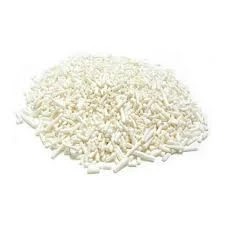
Inorganic Fertilizer
The Impact of Inorganic Fertilizers on Agriculture
Inorganic fertilizers, also known as synthetic or chemical fertilizers, have become an integral part of modern agriculture. These fertilizers are composed of mineral salts and are manufactured through chemical processes. Their primary components typically include nitrogen (N), phosphorus (P), and potassium (K), collectively referred to as NPK fertilizers. The widespread use of inorganic fertilizers has significantly enhanced crop yields, enabling farmers to meet the food demands of a rapidly growing global population.
One of the main advantages of inorganic fertilizers is their ability to provide nutrients to plants in a readily available form. Unlike organic fertilizers, which often require microbial activity to break down nutrients before plants can absorb them, inorganic fertilizers deliver nutrients directly to the root zone. This immediate availability can lead to quicker and more robust growth, particularly important in intensive farming operations where rapid returns on investment are desired.
However, the reliance on inorganic fertilizers is not without its drawbacks. One of the most significant concerns is the environmental impact associated with their use. When applied excessively, inorganic fertilizers can leach into waterways, causing nutrient pollution, which leads to problems such as algal blooms and eutrophication. These blooms deplete oxygen in the water, harming aquatic life and disrupting ecosystems. Additionally, the runoff can contaminate drinking water supplies, posing health risks to human populations.
inorganic fertilizer

Another issue is soil health. Over time, the continuous use of inorganic fertilizers can lead to soil degradation. These fertilizers often fail to replenish essential organic matter in the soil, which is crucial for maintaining soil structure, moisture retention, and microbial diversity. Consequently, farmers may find themselves in a cycle of dependency on chemical inputs, leading to diminishing returns and reduced soil fertility in the long term.
Moreover, the production of inorganic fertilizers is energy-intensive and contributes to greenhouse gas emissions, raising concerns about the overall sustainability of their use. In light of these environmental challenges, there is a growing movement toward more sustainable agricultural practices that incorporate organic fertilizers, crop rotation, and integrated pest management. These practices aim to maintain soil health while reducing dependency on chemical inputs.
In conclusion, while inorganic fertilizers have played a pivotal role in boosting agricultural productivity and ensuring food security, their environmental implications cannot be overlooked. Future agricultural practices must find a balance between utilizing the benefits of inorganic fertilizers and adopting sustainable methods that protect our ecosystems. As the global population continues to rise, the challenge lies in developing innovative solutions that ensure agricultural productivity without compromising the health of our planet. Transitioning toward a more sustainable agricultural system will require collaboration among farmers, researchers, and policymakers to create a resilient and sustainable food production system for generations to come.
-
Pure Sodium Dichloroisocyanurate Dihydrate | Powerful DisinfectantNewsAug.29,2025
-
Industrial Chemicals: Quality & Purity for Every IndustryNewsAug.28,2025
-
Nitrile Rubber Honoring Strict Production StandardsNewsAug.22,2025
-
Aspartame Ingredients Honoring Food Safety ValuesNewsAug.22,2025
-
Fertilizer for Balanced Plant NutritionNewsAug.22,2025
-
Cyanide Gold Processing with High Purity AdditivesNewsAug.22,2025
-
Formic Acid in Textile Dyeing ApplicationsNewsAug.22,2025
Hebei Tenger Chemical Technology Co., Ltd. focuses on the chemical industry and is committed to the export service of chemical raw materials.
-

view more DiethanolisopropanolamineIn the ever-growing field of chemical solutions, diethanolisopropanolamine (DEIPA) stands out as a versatile and important compound. Due to its unique chemical structure and properties, DEIPA is of interest to various industries including construction, personal care, and agriculture. -

view more TriisopropanolamineTriisopropanolamine (TIPA) alkanol amine substance, is a kind of alcohol amine compound with amino and alcohol hydroxyl, and because of its molecules contains both amino and hydroxyl. -

view more Tetramethyl Thiuram DisulfideTetramethyl thiuram disulfide, also known as TMTD, is a white to light-yellow powder with a distinct sulfur-like odor. It is soluble in organic solvents such as benzene, acetone, and ethyl acetate, making it highly versatile for use in different formulations. TMTD is known for its excellent vulcanization acceleration properties, which makes it a key ingredient in the production of rubber products. Additionally, it acts as an effective fungicide and bactericide, making it valuable in agricultural applications. Its high purity and stability ensure consistent performance, making it a preferred choice for manufacturers across various industries.





